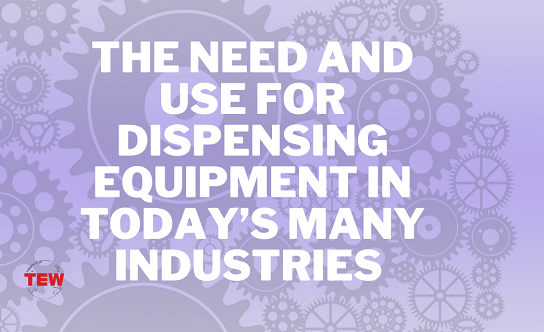Can you imagine life without a smartphone? Well, it wasn’t too long ago when this technology was more associated with science fiction than it was with reality. And, this has a lot to do with advances in Dispensing Equipment technology.
Dispensing technology has become an essential tool in the fabrication of some of our most used products. Without micro-dispensing tools, many of the devices we use and rely on today would not be possible. These dispensing machines enable small components to be installed in devices that need to be shielded from elements, bonded, and fastened securely. Here, we’ll explore how a variety of industries use Dispensing Equipment.
1. Automotive Industry
There’s nothing like driving off the lot in the brand new ride, trimmed nicely with all bells and whistles of modern technology. Today, we have onboard GPS, wireless technology, hands-free use of our phones, and Bluetooth technology all within arm’s reach from our driver’s seat.
Devices such as tire pressure sensors, onboard electronic and touch screen systems all need to be fabricated and put together using extremely small components.
These components need to be able to withstand heat, electromagnetic interference, and a host of other elements which could damage them over time. High-quality dispensing equipment is essential for the fabrication of these essential components.
2. Medical Laboratory and Pharmaceuticals
All of the advances in medicine would be inapplicable if there weren’t methods for creating devices, processing drugs, and studying viruses with ease. Dispensing machines make the fabrication of tools, instruments, and testing devices possible.
Patient monitors display the critical information that doctors and nurses need to visually reference when caring for a patient. As well as for bonding needles to glass or plastic syringes, dispensing machines make the bonding of these instruments possible and far more efficient than with methods used decades ago.
3. Digital Communication
As previously mentioned, life without a smartphone is almost unimaginable for some people. Today, smartphones have so interconnected us. Our smartphones make this a possibility, one that we can carry around in our pockets for convenience.
Fabricating digital devices requires using small components, weather-proof casing, and numerous instruments bonded together into one cohesive unit.
With the advances in digital communication far exceeding almost any other industry, a quality process for putting all of these components together is possible because of dispensing equipment.
4. Other Devices
While you may be able to sit in your brand new car, navigate with your GPS, call your brother in Santa Monica, and take a picture of that beautiful sunset as you stop along the Pacific coast highway, all of this technology is put up together using dispensing equipment.
Cameras need to be bonded and sealed. GPS systems need the same levels of protection. As well as industrial applications such as those that rely on Radar, LIDAR, and other technologies which require protection from several external forces.
A micro-dispensing device is able to calculate and apply the proper amount of liquid bonding material. That makes the use of all of these devices possible. Even your AirPods have to be put together, sealed, and protected from external forces such as water and interference.
The Future of Dispensing Equipment
As you may have noticed, most of the devices we use today are smaller. At any rate, the internal components are also becoming smaller. And as such, smaller amounts of the bonding material are necessary in order to put everything together properly.
It’s not simply the smaller components that need bonding, we also need to fabricate them using extreme precision.
As the need for miniaturized technology grows, so need for quality dispensing machines in order to put this technology together. With advances also comes an evolution in the type of bonding materials we use and methods for applying the material to products and devices. The world of Dispensing Equipment is probably only going to get smaller. But as it does, watch the use of our products get larger.





